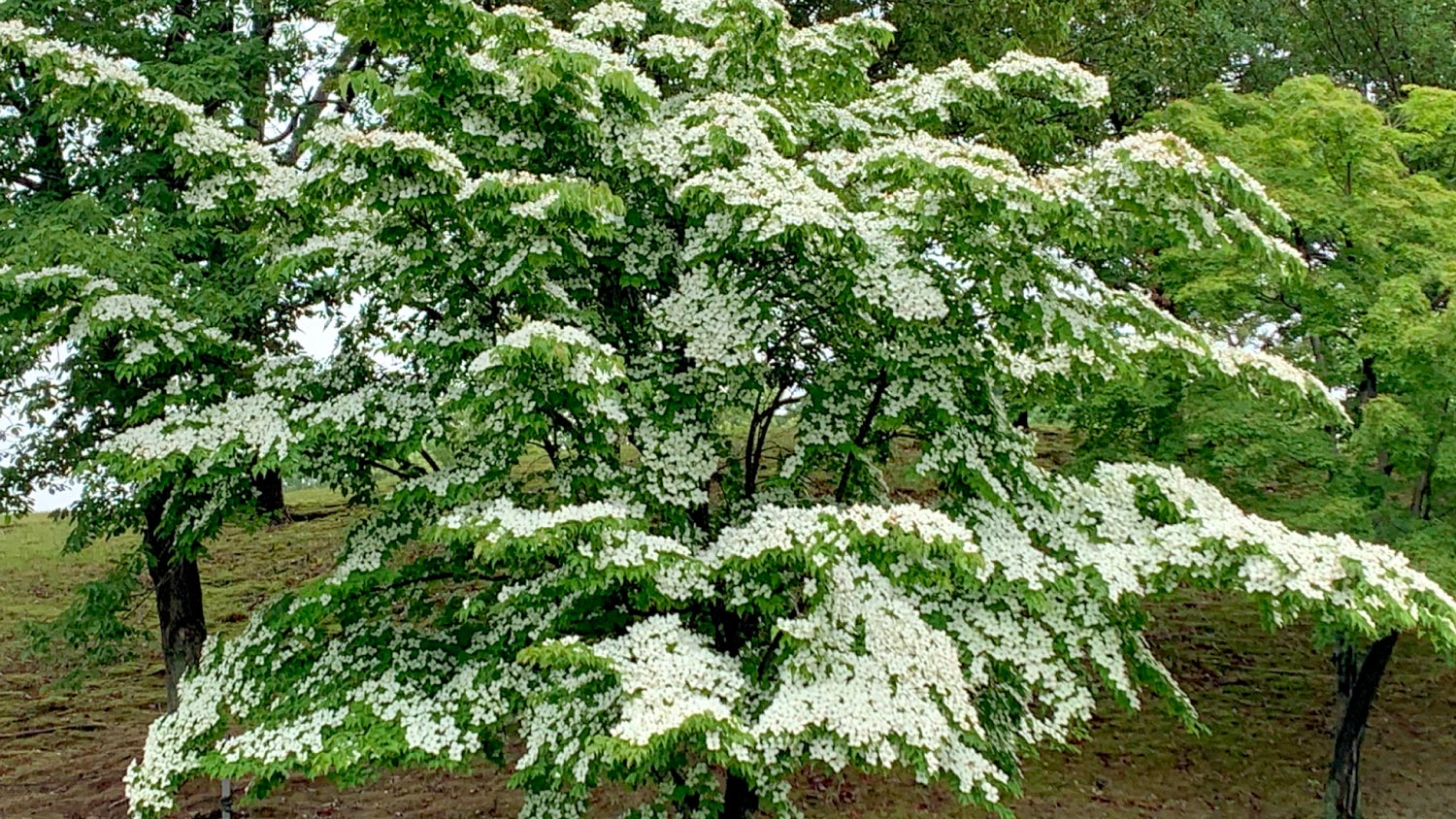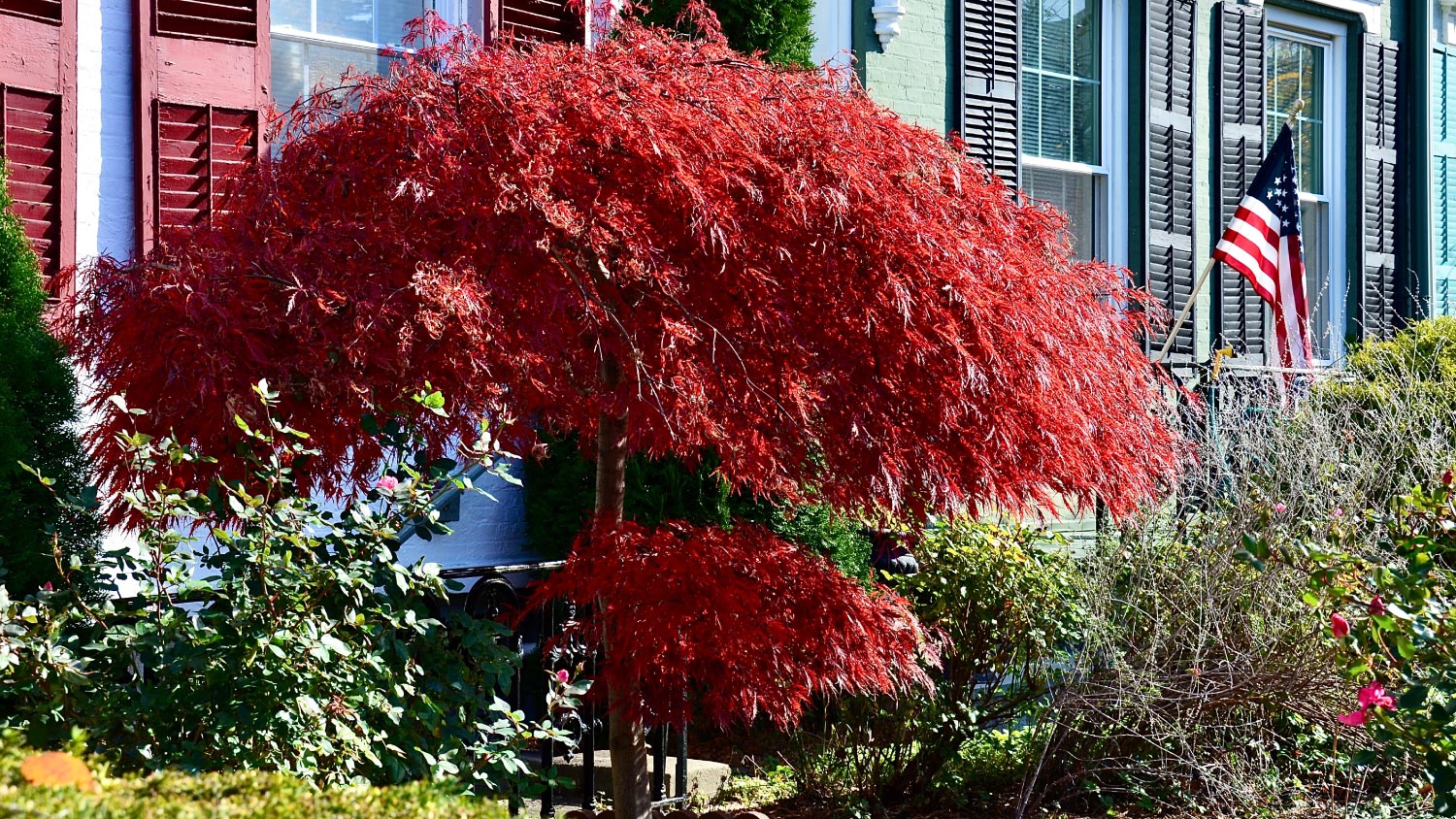Add Some Street Style: 10 Trees With Great Curb Appeal
Pick the right stately specimen to score points on your street


First impressions matter when it comes to a home, and nothing makes a bigger initial impact than a tidy front yard. A well-placed tree can add value to your property and has many other benefits. Healthy, mature trees connect you with your outside space, support the environment and surrounding wildlife, and can even help you make energy savings.
Whether you’re looking to add year-round interest, delight with spring blooms, or dazzle with fall foliage, choosing the right tree for your space and climate is important. Hiring a certified arborist for a consultation can be a worthwhile investment, as they can advise on whether a tree you have in mind will do well in your landscape—the last thing you want is a weak, disease-ridden, messy specimen.
If you’re looking for inspiration and want to keep up good neighborly relations, these versatile trees all add great curb appeal.
1. Crabapple Trees
USDA Hardiness Zones: 4 to 8
Want to attract wildlife to your yard? Look no further than one of the many compact, deciduous crabapple species. These are showy, fragrant spring-blooming trees that pollinators love, and their small, tangy fruit is perfect for making tasty jelly in the fall.
Depending on your yard conditions and climate, there are hundreds of versatile crabapple varieties to choose from. Malus ‘Adirondack’ is an award-winning, disease-resistant cultivar for a full sun position. Its upright, columnar form (it rarely grows taller than 18 feet) makes it a good choice for narrow front yards.
2. Kousa Dogwood

USDA Hardiness Zones: 5 to 8
Dogwoods are shapely flowering shrubs or trees popular in home landscaping for good reasons. The kousa dogwood (Cornus kousa) is a disease-resistant, slow and low-growing species (maximum height of 30 feet). It’s ideal for use as a beautiful specimen plant under front yard power lines, and you won’t have to worry about the tree roots interfering with home foundations because they are shallow and non-invasive. These trees do well in shade, have attractive summer blooms, dramatic fall foliage, and edible berries that wildlife love. And the peeling bark on the mature trees provides winter interest.
3. Eastern Red Cedar
USDA Hardiness Zones: 2 to 9
The evergreen eastern red cedar (Juniperus virginiana) might not be as ornamentally attractive as some of the other trees on this list. Still, this juniper species is an excellent choice if you need something low-maintenance, hardy, and adaptable. Adding year-round greenery and texture, the dense, aromatic foliage makes for an excellent windbreak or privacy screen, and its high salt tolerance means it works well in coastal front yards.
Be aware, however, that this fast-growing native species can reach heights of 50 feet and is invasive in some US regions.
4. Franklin Tree
USDA Hardiness Zones: 5 to 8
This compact, graceful, deciduous tree is ideal for smaller front yards (growing up to 20 feet tall) and will undoubtedly be a talking point with your neighbors. The large, late summer blooming fragrant white flowers of the Franklin tree (Franklinia alatamaha) and colorful fall foliage make it stand out.
By planting one of these trees, you’ll be helping to conserve a historical, native species now extinct in the wild. Just be aware that it's the most challenging to grow of all the trees on this list. They’re particular about moisture levels, environmental stresses, and need nutrient-rich, acidic soil.
5. Fringe Tree
USDA Hardiness Zones: 3 to 9
Other spring-flowering species often overshadow the fringe tree (Chionanthus virginicus). It’s surprising given it’s an easy-to-grow, adaptable, pretty, and compact eastern North American native. The wispy white flowers put on an impressive show throughout May and June, and birds love the fall fruit. They do well in wet soils, so it’s a good match for front yards that don’t have great drainage.
6. Hackberry
USDA Hardiness Zones: 3 to 9
You won’t find a hardier deciduous species than the common hackberry (Celtis occidentalis). This large, energy-conserving shade tree can handle strong winds, urban pollution, heat, flooding, and drought. It’s a good choice if you’re looking to conserve water, but still want a medium-large specimen tree with an arching habit in your yard.
If you want to develop an impressive garden ecosystem, the hackberry is attractive to various wild birds and butterflies. Plus, the warty, corky bark adds interest to your landscape throughout the year.
7. Japanese Maple

USDA Hardiness Zones: 5 to 8
It’s all about the fall foliage when it comes to the many Japanese Maple (Acer palmatum) cultivars. And these compact, slow-growing, versatile, and striking trees can grow in even the smallest of front yards.
Their architectural form means they offer a great focal point in your landscape. And, because they grow easily in containers, these trees are ideal even if you only have a small porch. An added advantage is that they’re more shade-tolerant than many other deciduous species.
8. Southern Magnolia
USDA Hardiness Zones: 6 to 10
With their showy, fragrant blooms and glossy, deep green foliage, magnolias are synonymous with the South, and none more so than the aptly named southern magnolia (Magnolia grandiflora). These aristocratic evergreen shade trees grow up to 50 feet tall (although there are dwarf varieties that work in smaller yards). And strategically planting large shade trees like this can help to reduce your energy costs.
You can grow southern magnolia in most soil types, and there aren’t many pests that bother it. However, with their large surface roots, they aren’t ideal for planting too close to concrete patios or driveways.
9. Red Maple
USDA Hardiness Zones: 3 to 9
The deep and varied colors of the fall foliage on the red maple (Acer rubrum) are sure to stop any passerby in their tracks. Adaptable to many environments and climates, these large, native shade trees make for great specimens in a spacious front yard where you want to try to cut costs on your home cooling bills—they can grow to 70 feet tall. And, unlike many other shade trees, it isn’t messy and is tolerant of fairly wet soils.
10. River Birch
USDA Hardiness Zones: 4 to 9
If you’re looking for a tree to add winter interest in your front yard, the deciduous river birch (Betula nigra), with its cinnamon-colored, curling bark, is a good option. Resistant to the bronze birch borer, happy in wet soils, and more heat tolerant than some other birch species, the river birch has a lot going for it. You can grow this adaptable, fast-growing species in almost any region of the US—you just need space, as it can reach heights of over 70 feet.





- Landscapers
- Tree Surgeons
- Gardening Services
- Landscape Architects
- Sod Installation
- Tennis Court Contractors
- Landscape Design
- Retaining Wall Companies
- Grading Companies
- Landscape Rock & Sand Delivery
- Mulch Delivery Services
- Pond Companies
- Artificial Grass Companies
- Shrub Removal & Trimming
- Backyard Design Companies
- Commercial Landscaping
- Koi Pond Services
- Backyard Landscapers
- Trampoline Assembly
- Hedge Trimming
- Pond Services
- Garden Design
- Outdoor Plant Watering
- Putting Greens
- French Drains
- Turf Installation
- Sod Removal Services
- Lawn Repair Services
- Brush Chipping Services
- Hardscape Contractor
- Landscape Rock Removal
- 10 Great Trees for Bees and Other Pollinators
- 10 Outdoor Plants You (Most Likely) Can’t Kill
- 25 Types of Shrubs to Consider for Your Landscape
- The Power of Trees: Learn Which Ones Can Make Your Property Value Flourish
- 7 Reasons Why You Shouldn't Plant a Tree in Your Yard
- 26 Plants That Are Perfect for Shaded Gardens
- 17 Best Fruit-Bearing Trees to Grow in Your Backyard
- 21 Front Yard Landscaping Ideas to Boost Your Curb Appeal
- Here’s Where To Plant Trees In Your Backyard
- 14 Incredibly Invasive Trees to Avoid Planting on Your Property










